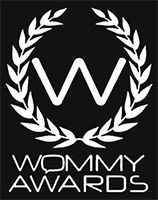
How do consumer conversations affect your brand?
The following is an excerpt of a conversation with PepsiCo's Kevin Moeller and Engagement Labs' CEO Ed Keller, who spoke with Kantar's Walker Smith as part of Kantar's Future Proof podcast. Future Proof is the marketing podcast from Saïd Business School, University of Oxford and Kantar, the Marketing Insights and consulting company.
(Note: This was recorded prior to the COVID-19 pandemic. The transcript excerpt was edited for readability.)
Kevin Moeller is the head of Media Insights and Analytics for PepsiCo North America. Before that, he was the chief research and analytics officer for UM Worldwide, serving on the executive leadership team. His background includes leadership roles at the Media Behavior Institute, MediaComm and Nielsen. In 2018, the Interactive Advertising Bureau named Kevin a data rock star.
---
Question: Tell us a little bit about the state of the industry when it comes to accounting for the impact of conversations on building brands.
Kevin Moeller: There's a lot going on between understanding how consumers are leveraging different channels and channels that are available. Frankly, how marketers can break through the noise and connect with their key consumers at relevant times for that type of messaging and in some privacy legislation and new media channels popping up every day. And it makes a dynamic industry right now. We have more data than we've ever had before, which allows a lot more possibility in how we can not only unearth insights about target consumers, but how we can connect with them in really meaningful and specific ways.
Q: When you think about this and the kind of measurement of online and offline conversations? How do you think about this broad area of social marketing or what Engagement Labs calls TotalSocial?
KM: When I was on the agency side, CPG is definitely one of the harder ones. It may not be intuitive, but it is because there is lack of data availability in real time. From a sales perspective, we have to use other metrics that will help guide us or be leading indicators that will be indicative of a sale. Word of mouth generally is a really good one. The work that we've done with Ed and his Engagement Labs team has really helped us quantify and understand how our communications, and our creative in the marketplace is being received by consumers. Not just from a sentiment perspective, but whether it is actually getting people to talk about our brands and therefore purchase our brands. The work that we are doing with Engagement Labs has actually expanded our idea of what our ROI is, because it's not just a linear path. I put media in the marketplace and someone eyes it. I put media in the marketplace. It generates equity, it generates brand consideration, it generates advocacy. It generates people talking about our brand. There is a quantifiable dollar value for each of those brand health metrics, including the active people talking about our brand. We have been able to work with Ed and Engagement Labs to put a solid number against what that value of a conversation is, which therefore uncovers more information about how our marketing dollars are doing in the marketplace. It has truly been invaluable for us to be able to parse out even more information from our sales using this methodology.
Q: What kind of marketing strategies and tactics are enabled by a deeper look at conversations. How do you activate and track the impact of conversations in the ways in which you support your brands?
KM: A great example is the launch of bubly last year. bubly is a super fun, super irreverent brand of sparkling water that went pretty big in the 2019 Super Bowl. We did a fantastic creative and integration with Michael Bublé, had a really fun spot that played off of the name of bubly and Bublé, and we debuted a 30 second spot at the 2019 Super Bowl. But that wasn't the totality of the campaign. There were seedings of that campaign several weeks leading into the Super Bowl with things like integration on Ellen that lasted for several episodes. We brought the creative and strategy all the way through into stores where we had actual merchandise that was altered in the spot itself. Understanding how that results in sales is one thing. Having an understanding of how consumers react to a spot like that or a campaign program like that is something else. Without understanding how people are talking about our brand, we would have to wait several weeks for the results of sales data coming in from our sales partners using online social listening and word of mouth, and face to face word of mouth. The TotalSocial that Engagement Labs offers really allowed us to better understand which aspect of the program are resonating and in which ways. On the back end, we can actually parse out the value of those individual attributes of the program, which will help further our understanding of what worked, what didn't work. How do we optimize it for the future and how do we leverage those types of ideas to gain or and more traction with consumers?
Q: What one key takeaway or one thing to put on their radar when it comes to conversations, what would that be?
KM: Brands need to understand the value that connecting with consumers have. It's not just a one-off conversation. When building a relationship with people and consumers, you want to hear what they have to say, because what they have to say will impact how they feel about your brand, which will impact whether they're engaging and sing your brand.






